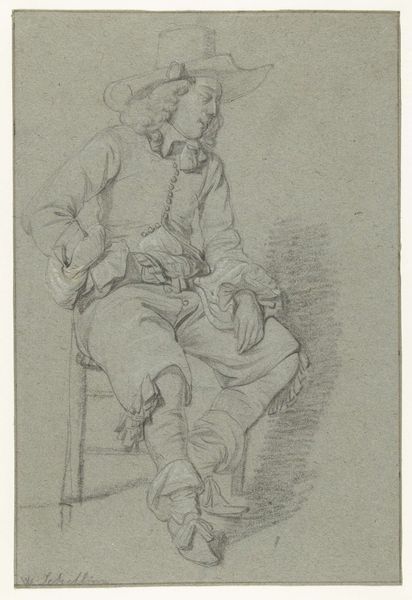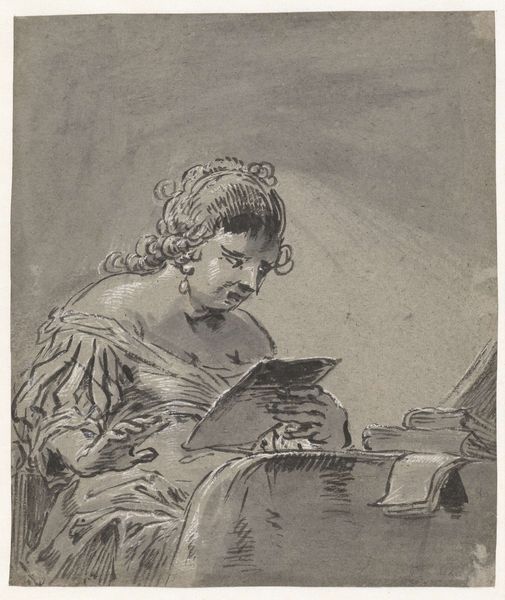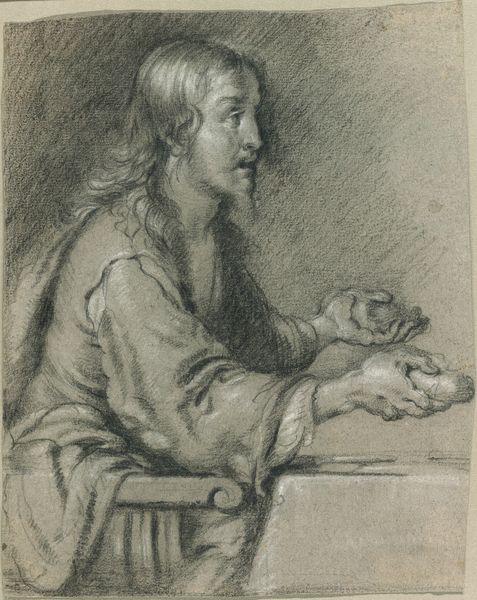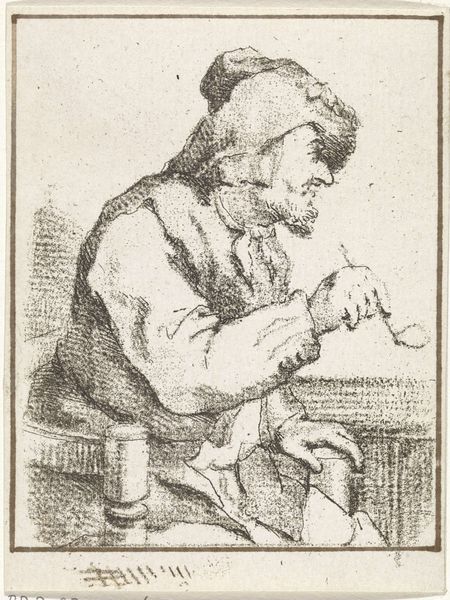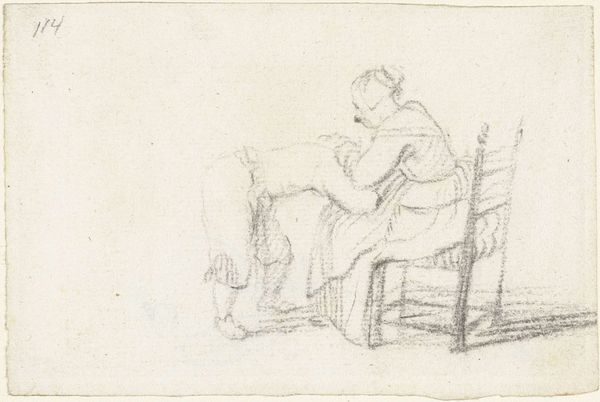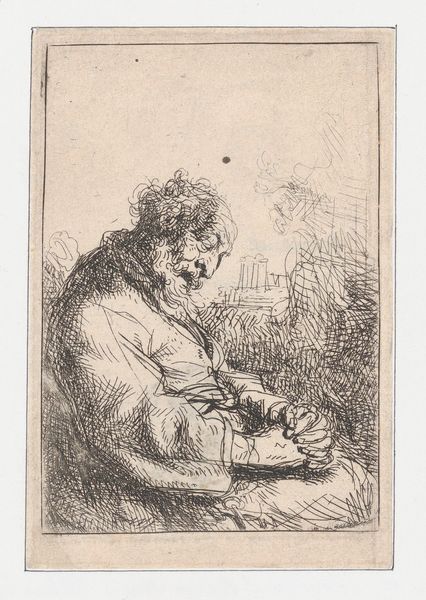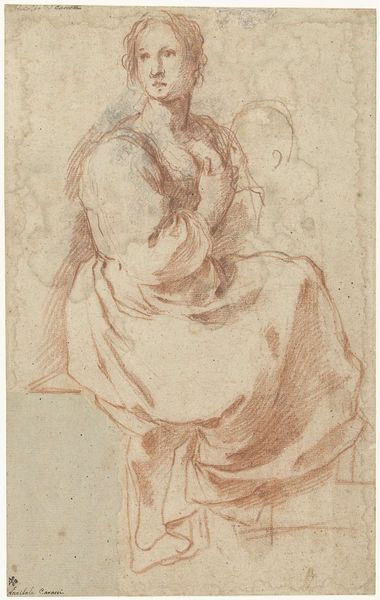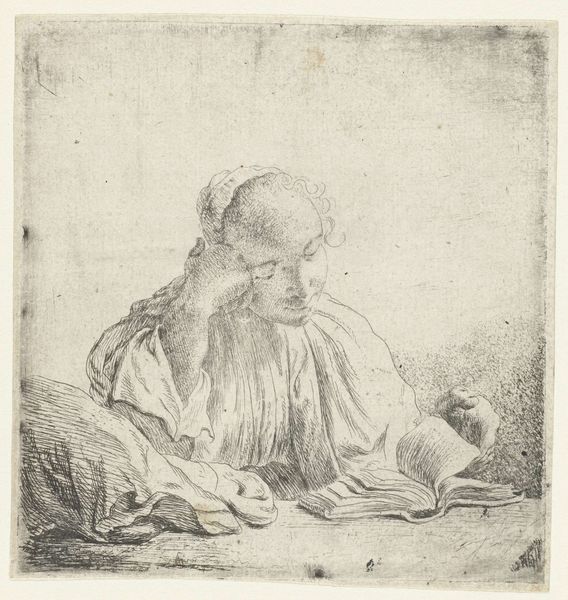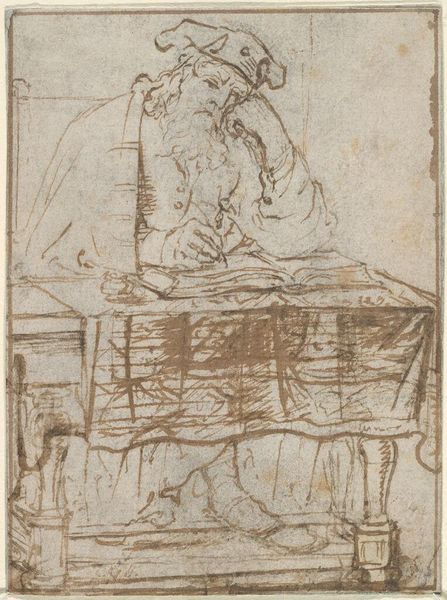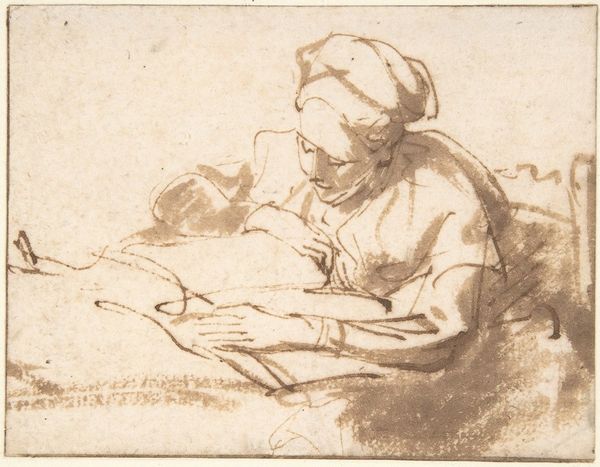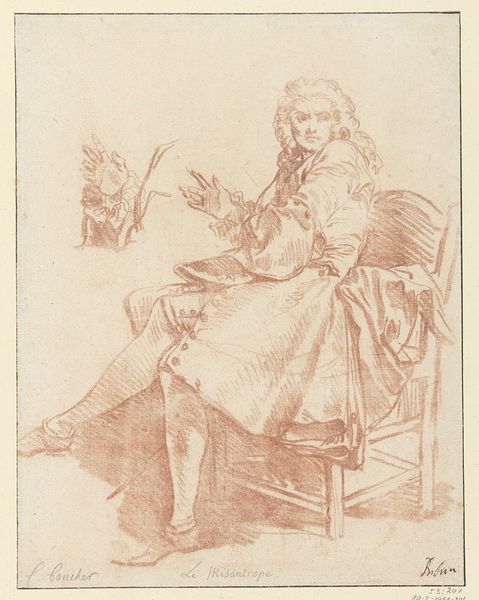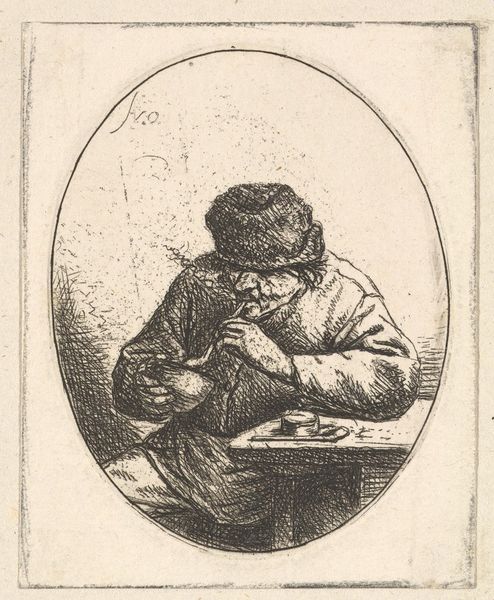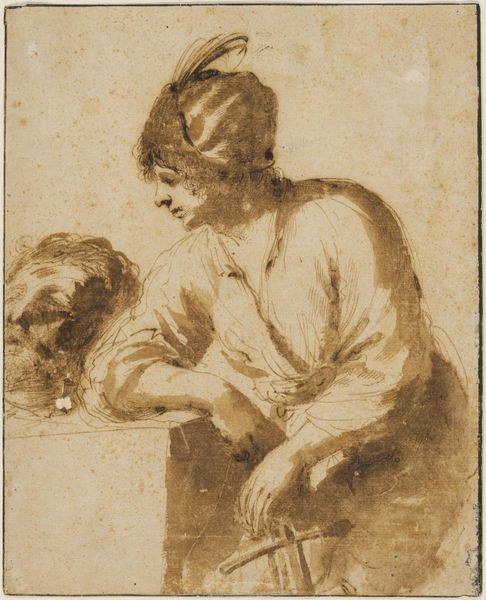
Young Man with a Fur Cap, Seated and Writing in an Account Book c. 1650 - 1660
0:00
0:00
drawing, pencil
#
portrait
#
drawing
#
dutch-golden-age
#
figuration
#
pencil drawing
#
pencil
#
portrait drawing
#
realism
Dimensions: height 219 mm, width 184 mm
Copyright: Rijks Museum: Open Domain
Curator: Look at this unassuming drawing; it captures a moment of quiet concentration. The artwork is titled "Young Man with a Fur Cap, Seated and Writing in an Account Book" attributed to Constantijn Verhout, made sometime between 1650 and 1660 using pencil. It's quite small, almost intimate in scale. Editor: It is unassuming, but there's something deeply comforting about it, almost like a faded memory. The soft greys evoke a sense of nostalgia, and the meticulous details—particularly in the fur cap—suggest a longing for something beyond the everyday. Is that also a globe over on the left? Curator: Good eye. It’s definitely intriguing that a young man, presumed to be engrossed in finances, is juxtaposed with a symbol of worldly exploration. During the Dutch Golden Age, the rise of mercantile capitalism transformed Dutch society. The tension between this new, practical world and the age of exploration provides the background for much of the era’s art and literature. Editor: And the fur cap. We see them so often in portraiture of the period and they clearly represented status. He's not just doing accounts; he is likely making deals, connecting the dots between far-flung places and resources that are visually reinforced with the globe itself, making his daily ledger into an allegory of world affairs. There’s also that very relaxed hand not holding the pen – as if the deals themselves can be executed with no apparent pressure. Curator: Exactly. This drawing also allows us to consider the role of such institutions in promoting particular social values and behaviours, showing what aspects of economic life were valued or deemed worthy of depiction. What would this image mean when shown to certain people? How would certain images cement the values that enabled institutions to promote such economic exchange? Editor: Absolutely. Even something as commonplace as a quill holds symbolic weight; the means of inscription are themselves testaments to education, to power, and to permanence. While the drawing presents realism, it simultaneously reinforces ideas about cultural continuity and values. Curator: So while simple in its composition and execution, this image really brings so much more. It reminds us that even mundane activities carry cultural and historical meaning. Editor: Indeed, looking again I see not just a boy and his books, but the story of global change itself unfolding quietly.
Comments
No comments
Be the first to comment and join the conversation on the ultimate creative platform.
